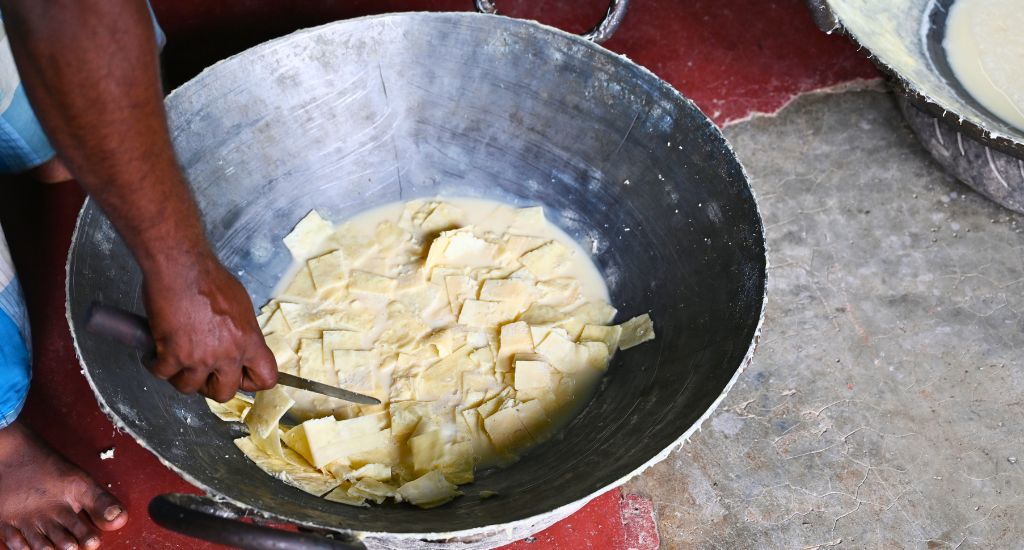Within the heart of West Bengal’s Hooghly district, a village officially known as Gangpur has shifted in time, like sands in an hourglass. It is now adorned with the nickname Rabrigram – injecting sweetness of rabri into its very soul.
This transformation mirrors the artistry of the villagers who are masters of confecting rabri – ambrosia woven from thickened, sweetened milk covered with clotted cream.
This village, a mere 39 km from the ‘hoichoi’ (hustle-bustle) of Kolkata, has ascended to prominence due to the virtuosity of its womenfolk, who bestow upon this confection a magic that dances upon the palates of every sweet lover.
The journey of Rabrigram’s rise can be traced back to around four decades ago when Pannalal Balti, a skilled confectionery chef at a sweetshop in Bhawanipur, Kolkata, realised that he was being exploited by his employer, who was reaping substantial profits from the rabri he meticulously crafted, all while paying him meagre wages.
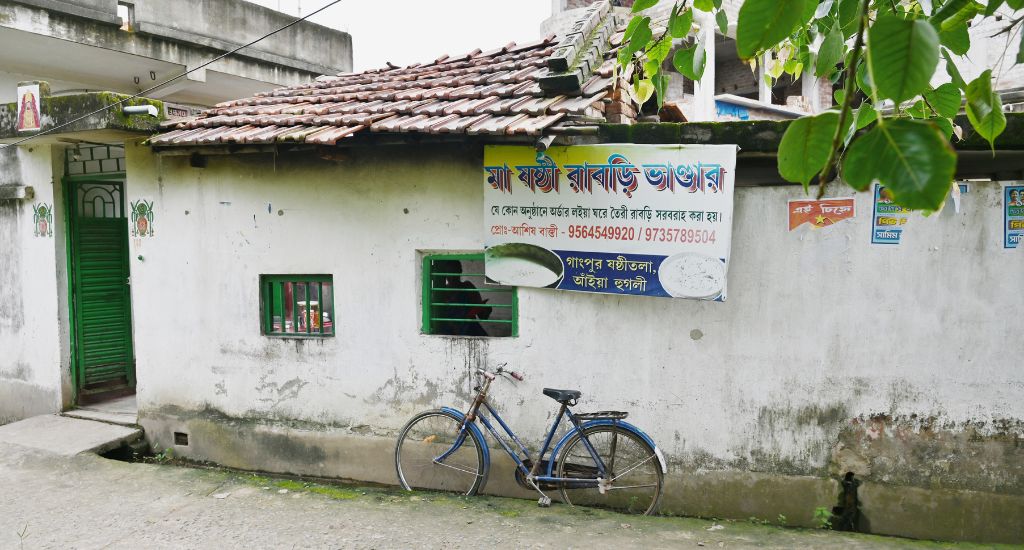
Pannalal’s resolve led him to return to his native village, accompanied by Manasa Charan Balti, another enterprising individual. Together, they initiated a modest venture, inadvertently transforming the village into a thriving cottage industry.
Sanat Ghosh, proprietor of Maa Kali Rabri Bhandar, offered another perspective on the village’s rapid ascent in the rabri-making domain. He attributed the rabri business to the removal of Kolkata’s cattle sheds, known as ‘khatal’, following the implementation of the 1981 West Bengal Land Reforms (Amendment) Act in March 1986.
Also Read: How Kud has become Kashmir’s sweet-making powerhouse
The sudden departure of herders led to an upheaval in the city’s milk supply, consequently affecting sweetshops and causing the dismissal of numerous chefs.
Rabrigram’s rabri: Women to the fore
The mantle of rabri-making shifted from men to women approximately 35 years ago. Recognising the growing demand for rabri and its potential to supplement family incomes, housewives embraced the art, with their male counterparts transitioning into supporting roles.
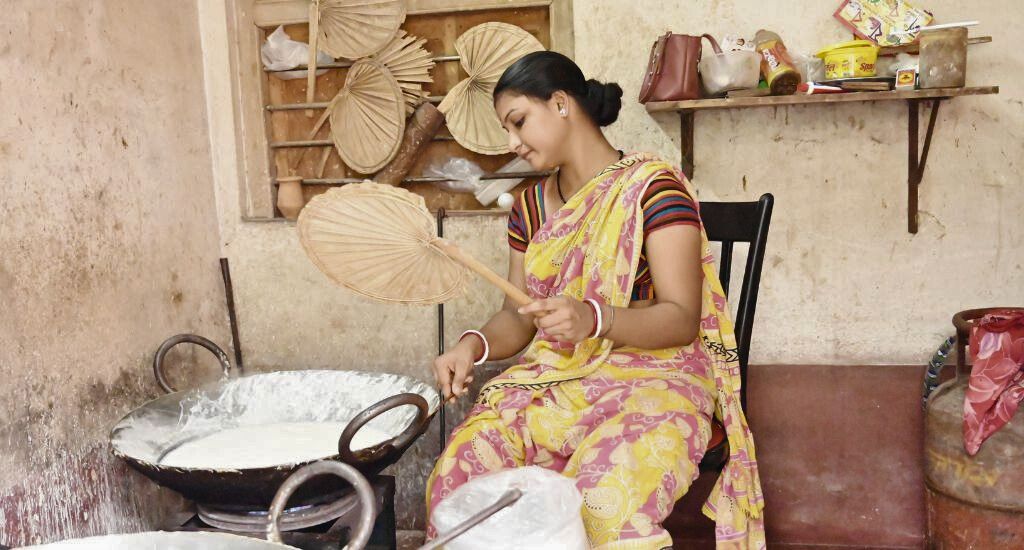
Bijoli Balti, Mithu Balti, Rupali Ghosh, and Soma Balti are the weavers of this tale, rising before dawn to choreograph their daily pas de deux with rabri.
Like clockwork, the talented women deftly navigate their daily chores before taming the flame beneath coal furnaces and gas stoves. They orchestrate the transformation of cow’s milk into one of India’s most cherished desserts.
The process of making rabri involves accurate steps, as narrated by 43-year-old Mithu Balti, co-owner of Manasa Rabri Bhandar. She describes the process of boiling milk, whisking it to form a cream layer, and adding sugar only after the milk boils vigorously. Mithu exemplifies the commitment of the rabri-makers, producing up to 25kg daily from 84 litres of milk.
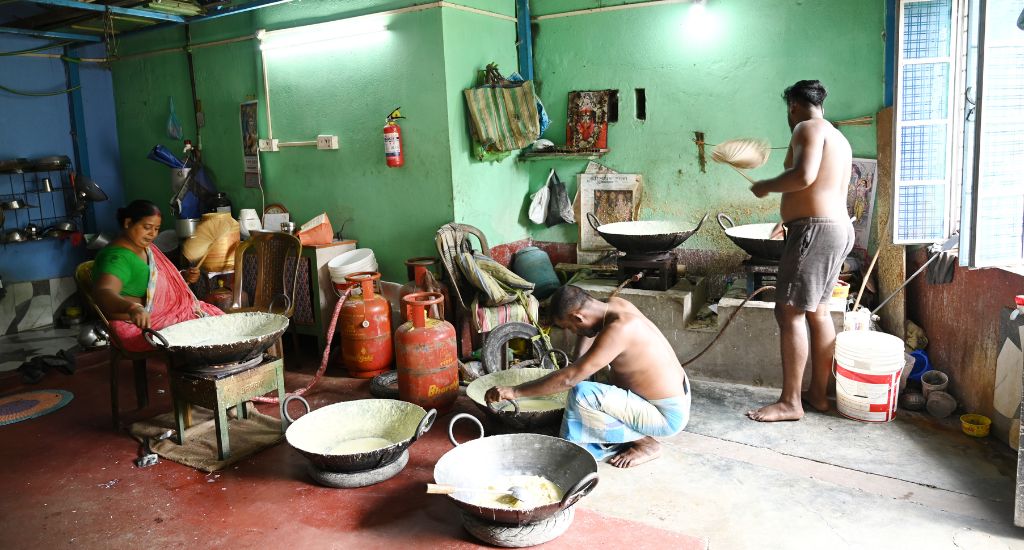
“My husband travels to sweetshops in Kolkata to deliver rabri. My father-in-law Manasa Charan Balti founded the business about four decades ago. I’ve been making rabri for the past 12 years,” she said. Each vessel of rabri cradles a journey: three sizes, 100 grams, 500 grams, and 1kg.
Soma Balti, owner of Maa Shashti Rabri Bhandar, elaborates on the nuances of rabri-making, highlighting the various flavours on offer – regular, sugar-free, light sugar, and nolen gur (jaggery). The 38-year-old’s daily production averages around 35kg, catering to a wide range of consumers across multiple locations.
Also Read: The sweet success of a tea plucker-turned-dragon fruit farmer
Wok of wealth
Nearly 50 households are now part of this thriving business, serving as a testament to the village’s embodiment of women’s empowerment – their reward: a dance with revenues.
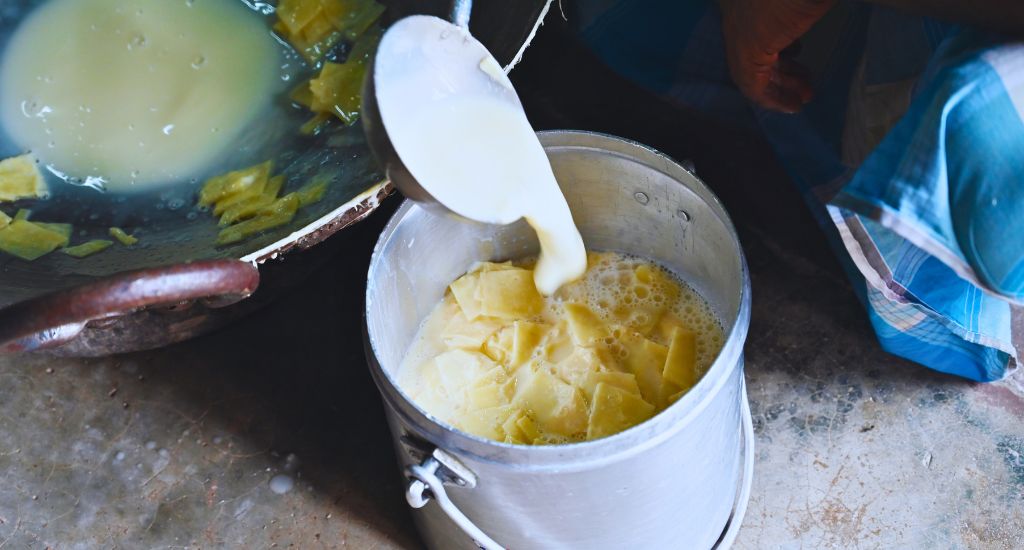
Nepal Charan Balti, proprietor of Manasa Rabri Bhandar, proudly states that the village earns a staggering Rs 60 lakh in annual revenue from this unpretentious business.
Equipped with rudimentary tools like a cast iron wok, spud, knife, hand fan, bamboo stick, bucket, and furnace or gas burner, these artisans churn out a delightful treat. The women do the heavy hauling each day – such as scrubbing clean woks that weigh 23 kg.
Depending on the rabri, the price ranges between Rs 300 and Rs 400 a kilo. The sugar-free and nolen gur varieties are priced at Rs 400.
“As cow milk prices have soared, rabri rates will shoot up too, beginning with the upcoming Durga Puja,” said Bijoli Balti, the 35-year-old co-owner of Maa Rakshakali Rabri Bhandar.
It’s worth noting that buffalo milk is not the preferred choice, as the cream layers tend to lose their texture and flavour, failing to maintain their desired consistency and taste. There is a conditional option for home delivery. A minimum of 15 kg must be ordered. Up to 40 km, delivery is free, after that, it is charged.
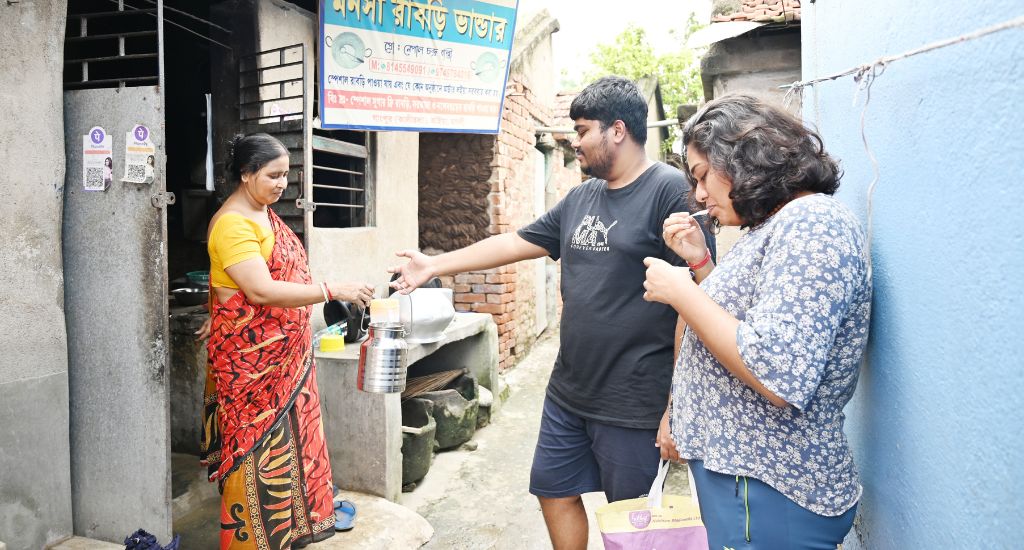
“For orders of 50-60 kg of rabri, we need to receive notification at least a week before, as we have to arrange the milk,” said Rupali Ghosh, the 21-year-old from Maa Kali Rabri Bhandar. When the order falls between 15kg and 20kg, providing the milkmen with a notice of 2-3 days is ample.
The village’s fame grew organically through word of mouth, becoming Rabrigram, a name that resonates with rabri enthusiasts across the state. As the quality of rabri captivates palates, the village stands as a shining example of how culinary craftsmanship can transform a community and its fortunes.
Also Read: Sangli’s grape farmers are ‘raisin’ the bar
The lead image shows mouthwatering rabri, ready to be removed from the wok (Photo by Partho Burman)
Partho Burman is a Kolkata-based award-winning journalist. He writes inspiring human interest and motivational stories.
